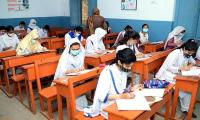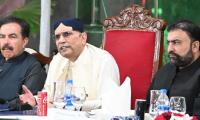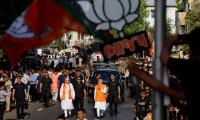Governments, civil society and rights advocacy groups around the world observe 16 Days of Activism Against Gender-based Violence (from November 25 to December 10).
The 16-day campaign calls to eliminate all forms of violence against women by raising awareness; strengthening national institutions; establishing links between local and international forums to end violence; demonstrate solidarity with women as well as creating mechanism to influence governments to implement commitments to end all forms of violence against women and girls.
With Covid-19 resurgence at a peak, the world retreated inside homes due to lockdowns, and reports have shown an alarming escalation in the already existing pandemic of violence against women. While international days draw attention to such key issues, it is conspicuous that women’s absence in decision-making roles is traditionally exacerbated by structural inequalities and pervasive patriarchal culture.
A UN Women study on violence against women in politics in South Asia shows that 60 percent of women do not participate in politics due to fear of violence. The region is home to one-fifth of the world’s population. One-third of South Asian women experience violence throughout their lives – South Asian politics being no different. Female candidates, their families and voters routinely face threats. These forms of political and electoral violence are largely obscured from the public eye, mainly because they happen in private spaces or due to prevailing gender normative patterns.
In Pakistan, more women than ever before are participating in political activity. Despite gains, women have traditionally remained underrepresented in the face of systemic challenges to take up positions in the political and public sphere. In defiance of the fact that Pakistan has had a woman prime minister twice and a woman speaker of the National Assembly, patriarchal notions of power-sharing and decision-making guide institutional structure at the level of family, community and the state. The major obstacles that women face in the context of political representation, empowerment and decision-making are low levels of literacy, low economic dividends, disproportionate share of responsibility for the family and home.
The quality of democracy’s institutional architecture in Pakistan depends on whether it has a strong foundation of shared democratic values and principles. Democratic values are more likely to flourish and endure when all segments of society are allowed free participation. To allow citizens’ agency to influence political outcomes without reprisal sets the bases of an inclusive and participatory democracy.
While discrimination and stereotypes lead to marginalization of gender and community groups, women political workers share common obstacles to political participation – variations in religion, sect, age, socio and economic status, or geography impacts them further. Psychological violence, especially through social media, is particularly widespread; being young, or from a minority community or a female opposition member may aggravate the situation.
Legislatures play a central role in developing legislation and allocating resources in order to promote the implementation of gender priorities, especially international commitments. The Beijing Platform for Action (1995), Convention on the Elimination of all Forms of Discrimination Against Women (CEDAW) as well as the gender-sensitive implementation of the Agenda 2030 Sustainable Development Goals – all lay the foundation of gender cooperation at international fora.
The constitution of Pakistan negates any discrimination on the basis of gender. Articles 25(3) and 34 are the two most significant articles in favor of women.
Claiming political space for women participation and representation is key to safeguard the rights and interests of half of the population. The electoral reforms of 2017 institutionalized women’s political participation on general seats while simultaneously preserving reserve seat quotas. Five percent allocation of seats to women within political party offices as well as five percent for general seats tickets; minimum 10 percent women voter turnout – the intervention can not be expected to address deep rooted power imbalance to crumble and fall at well-intended but loosely enforced laws.
While the incumbent National Assembly contemplates a private member bill on increasing women representation on party ticket lists from 5 to 25 percent while 50 percent office-bearers of any political party at the federal, provincial and local levels shall be women. Although the fate of such interventions eventually lies with senior party leaderships, legislative proposals like these set the aspiration for gender equality into practice.
The writer is a technical adviser to the Women’s Parliamentary Caucus, parliament of Pakistan.
Twitter: @hassanhakeem87
Any progressive society or government will uphold security so that people can utilize their full potential
In Pakistan, we have witnessed erosion of public trust in government institutions
Capability, accountability, and responsiveness don’t quite capture the increasingly important issue of legitimacy
The government can directly influence economic activity through current and capital expenditure
A view of the Supreme Court of Pakistan. — Supreme Court website/FileWhat kind of firewall does the judiciary...
Indian soldiers stand alongside a barbed wire on the Line of Control. — AFP/FileAnti-Pakistan propaganda remains a...







